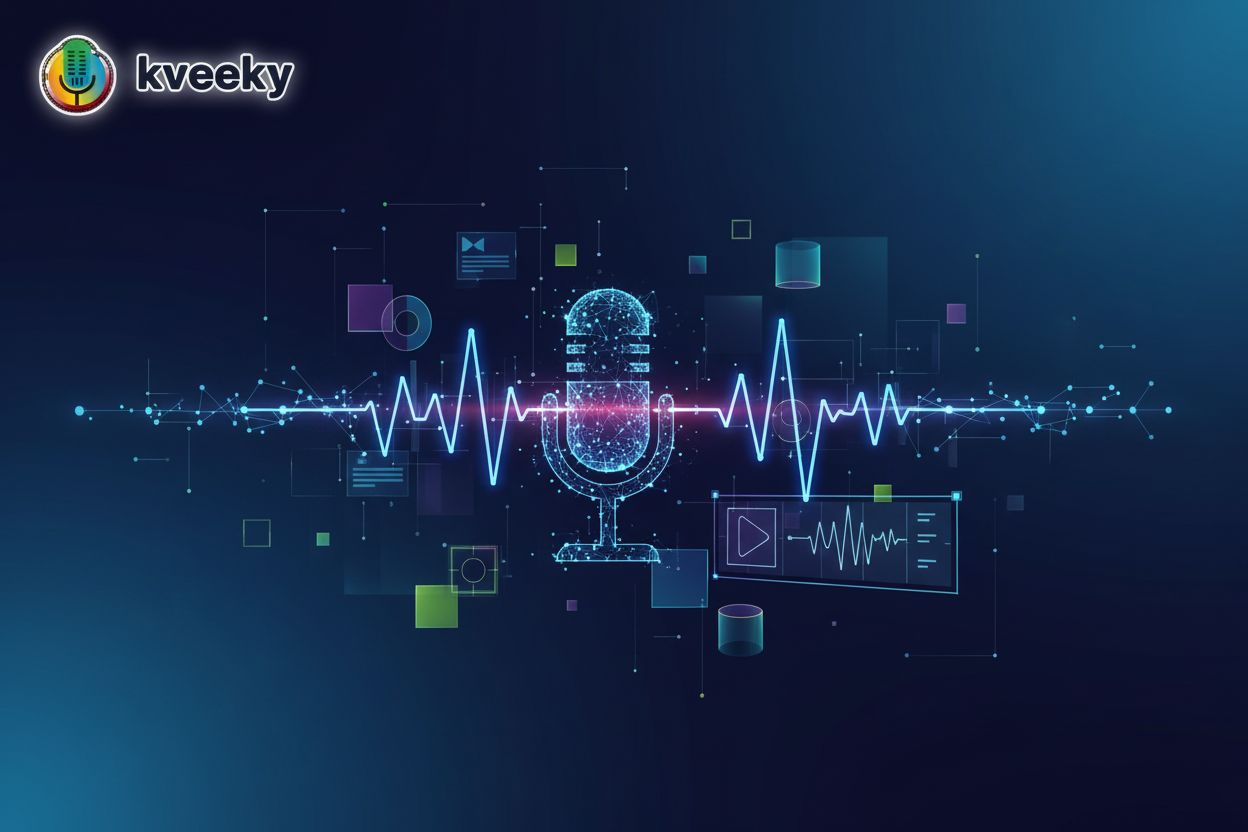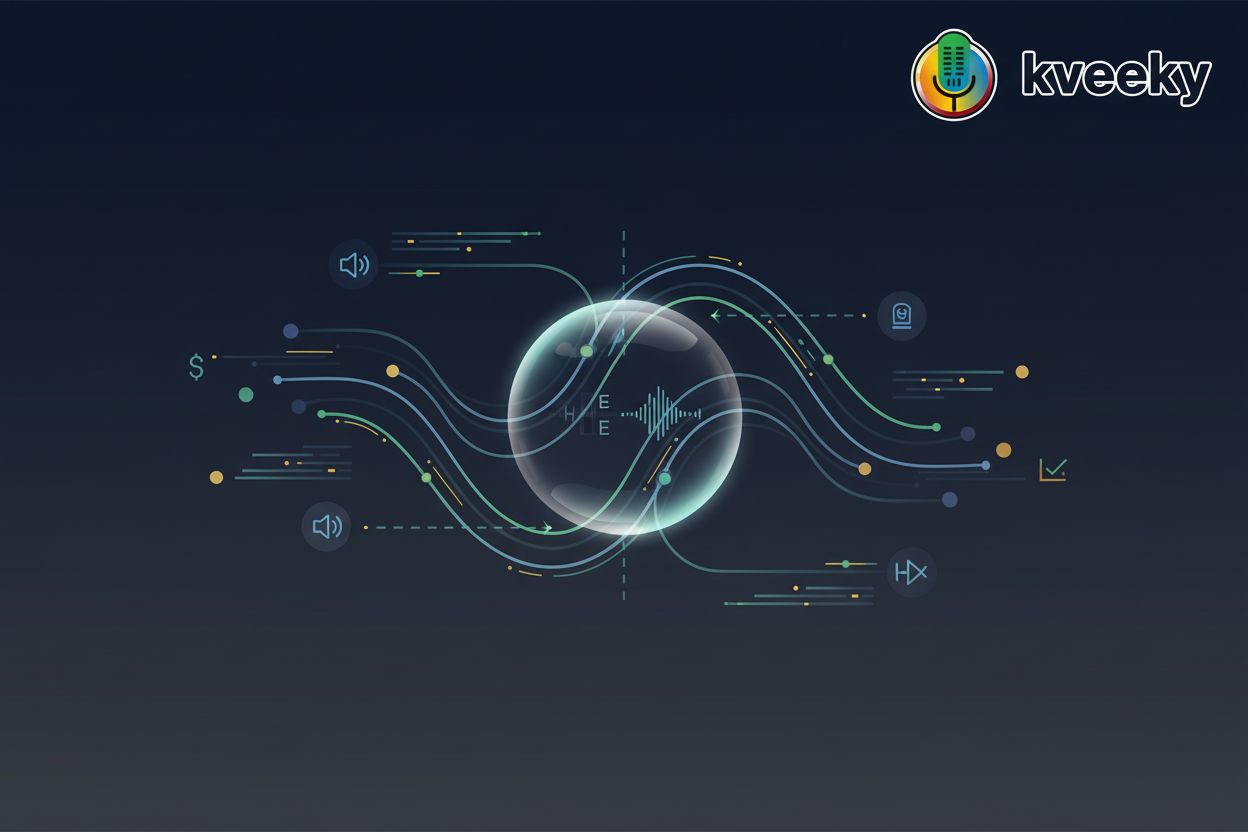Neural Vocoders: Achieving High-Fidelity Speech in AI Voiceover
Introduction to Neural Vocoders
Imagine turning raw data into crystal-clear speech that captivates your audience. That's the power of neural vocoders, and it's revolutionizing ai voiceover technology.
Neural vocoders are advanced algorithms that convert abstract data, like the output of a text-to-speech (tts) system, into audible speech. (Leveraging Neural Vocoder Artifacts for Improved Synthetic Speech ...) They represent a significant leap from traditional vocoders, which often produced robotic or unnatural-sounding audio. Instead of relying on pre-defined rules, neural vocoders use deep learning to generate realistic and high-quality audio.
- Neural vocoders excel at transforming spectrograms (visual representations of audio frequencies) into actual sound waves.
- Traditional vocoders use simplified models of speech production, neural vocoders learn complex patterns directly from data, resulting in more nuanced and human-like voices. (Recent Advances in Speech Language Models: A Survey - arXiv)
- For instance, in healthcare, synthesized voices powered by neural vocoders can provide clear instructions for patients with visual impairments. According to a paper on ArXiv, a "NeuroIncept Decoder for High-Fidelity Speech Reconstruction from Neural Activity" NeuroIncept Decoder for High-Fidelity Speech Reconstruction from Neural Activity, neural decoding techniques can restore communicative abilities in individuals with speech disorders and paves the way for future advancements in brain-computer interface technologies.
In today's digital landscape, audio quality is paramount. Whether it's a YouTube explainer or an e-learning module, the clarity and naturalness of the speech directly impact audience engagement.
- Poor audio can lead to viewer drop-off and a negative perception of your content. As shown on YouTube engaging content leads to success.
- For professional voiceovers, high-fidelity speech is non-negotiable. Clients expect a polished sound that reflects the quality of their brand.
- Clear and natural-sounding speech enhances comprehension and retention in e-learning and marketing videos. It ensures that your message is not only heard but also understood.
As we move forward, understanding the underlying technology of neural vocoders is essential for anyone involved in audio production or ai-driven content creation. Next, we'll explore the different types of neural vocoders and how they work.
How Neural Vocoders Work
Neural vocoders are like the secret sauce that transforms ai-generated text into realistic speech. But what's the magic behind this transformation? Let's dive into how neural vocoders work, exploring their architecture and key techniques.
Neural vocoders typically employ complex neural network architectures to convert acoustic features into waveforms.
- WaveNet, for example, uses dilated convolutions to capture long-range dependencies in audio, enabling it to generate highly coherent and natural-sounding speech.
- MelGAN leverages generative adversarial networks (gans) to produce high-fidelity audio from Mel spectrograms, offering a balance between quality and computational efficiency.
- The NeuroIncept Decoder, as previously discussed, combines Convolutional Neural Networks (cnns) and Gated Recurrent Units (grus) to reconstruct audio spectrograms from neural patterns, showing promise for brain-computer interface applications.
The encoding process takes input acoustic features, such as Mel spectrograms (which represent the intensity of different frequencies over time), and transforms them into a compressed, latent representation. This representation captures the essential characteristics of the speech signal. The decoder then takes this compressed representation and reconstructs the high-resolution audio waveform. Through training on vast amounts of speech data, neural vocoders learn to map these acoustic features to waveforms with remarkable accuracy.
Several key components and techniques contribute to the effectiveness of neural vocoders.
- Spectrograms and other acoustic features serve as the primary input, providing a detailed representation of the audio's frequency content over time. These features are derived from the raw audio signal and are often what a text-to-speech system initially generates.
- Techniques for generating high-resolution audio waveforms are crucial for achieving realistic sound. This often involves upsampling methods, where the model predicts intermediate audio samples to increase the sampling rate, and careful attention to detail in the waveform reconstruction process to avoid aliasing or distortion.
- Reducing artifacts and improving naturalness is an ongoing challenge. Researchers are developing various methods, such as adversarial training (where a generator network tries to fool a discriminator network into thinking the generated audio is real) and regularization techniques (which help prevent the model from overfitting to the training data), to minimize unwanted noise and ensure that the synthesized speech sounds as human-like as possible.
These advancements are crucial for enhancing user experience. Imagine retail environments using ai voiceovers to guide customers through product selections or financial institutions providing personalized investment advice via lifelike synthesized voices.
Understanding these core components and techniques provides a solid foundation for appreciating the capabilities of neural vocoders. Next, we'll explore the specific types of neural vocoders and their unique characteristics.
Advantages of Neural Vocoders over Traditional Methods
Did you know that early ai voiceovers often sounded robotic and unnatural? Neural vocoders have changed that, offering a significant leap in audio quality and realism.
One of the most significant advantages of neural vocoders is the improved audio quality they provide compared to traditional methods.
- Traditional vocoders often produced speech that sounded artificial, with noticeable robotic artifacts. Neural vocoders, on the other hand, leverage deep learning to generate more natural-sounding speech, reducing the presence of these unwanted artifacts.
- Neural vocoders excel at capturing the subtle nuances and emotional inflections in a voice. They can model complex acoustic features that traditional vocoders simply couldn't replicate.
- This capability leads to synthesized speech that is not only clearer but also more engaging and expressive, enhancing the overall listening experience.
Neural vocoders offer greater flexibility than traditional methods, adapting to various voices and speaking styles.
- Neural vocoders can be easily integrated with different text-to-speech (tts) systems. They can generate high-quality audio regardless of the input source.
- The potential for customization is another key advantage. Neural vocoders can be fine-tuned for specific applications, allowing developers to create personalized voices that meet unique requirements.
- For instance, a financial institution might use a neural vocoder to create a calm, reassuring voice for its automated customer service system. Or, as previously discussed, neural vocoders show promise in brain-computer interface applications to restore communicative abilities in individuals with speech disorders, according to the "NeuroIncept Decoder for High-Fidelity Speech Reconstruction from Neural Activity" NeuroIncept Decoder for High-Fidelity Speech Reconstruction from Neural Activity.
The flexibility and adaptability of neural vocoders make them a powerful tool. They enable developers to create customized audio solutions that meet the specific needs of their target audience.
As we continue, we'll explore different types of neural vocoders and their unique characteristics, further showcasing the versatility of this technology.
Applications in AI Voiceover and Content Creation
Ai voiceovers are no longer a futuristic fantasy; they're a present-day reality enhancing content across various industries. Let's explore how neural vocoders are powering these advancements in ai voiceover and content creation.
Video producers can now leverage ai voiceover tools to create high-quality audio.
- Tools like Kveeky offer customizable voice options to match the tone and style of different video projects. This ensures the voiceover aligns perfectly with the video's content and target audience.
- A user-friendly interface simplifies the process of script and voice selection. This allows producers to focus on the visual aspects of their videos, knowing the audio is in capable hands.
- By using ai voiceovers, video producers can save time and resources, producing professional-sounding videos more efficiently.
E-learning is another area where ai narration is making a significant impact.
- Natural-sounding ai voices create engaging e-learning content. This helps maintain student interest and improves knowledge retention.
- Neural vocoders are used to generate voiceovers for training videos and online courses. This ensures consistent audio quality across all learning materials.
- Clear and understandable ai-generated speech improves accessibility for all learners. This is especially beneficial for students with disabilities or those who prefer auditory learning.
Ai-generated voiceovers are also revolutionizing podcast creation and audio marketing.
- Ai voices can produce professional-quality podcasts without the need for expensive equipment or voice actors. This opens up podcasting to a wider range of creators.
- Ai voices can be used in audio ads and marketing campaigns to create consistent brand messaging. This helps establish a recognizable and trustworthy brand identity.
- Customizable ai voice solutions allow for the creation of consistent brand voices. This ensures that all audio content aligns with the brand's overall tone and style.
Neural vocoders are transforming the landscape of ai voiceover and content creation. They offer enhanced quality, flexibility, and accessibility across various applications. Next, we'll dive into the different types of neural vocoders.
Challenges and Future Directions
Are flawless ai voiceovers still a challenge? While neural vocoders have made incredible strides, several hurdles remain before they can truly mimic human speech. Let's explore these challenges and the exciting future directions researchers are pursuing.
One significant challenge is the computational resources required for training and running neural vocoders.
- Training these complex models often demands substantial processing power and time. This can be a barrier for smaller organizations or individual creators.
- Optimizing vocoder performance and reducing latency are crucial for real-time applications. Think of live streaming or interactive voice assistants where delays are unacceptable.
- Researchers are actively exploring lightweight neural vocoder architectures. The goal is to achieve high-fidelity speech with fewer computational demands, making the technology more accessible.
Generating emotionally expressive speech with ai remains a complex task.
- Humans naturally convey emotions through subtle changes in prosody and intonation. Mimicking these nuances in ai-generated speech is challenging.
- Techniques for incorporating prosody and intonation into neural vocoders are under development. This includes using more sophisticated models that can predict and generate appropriate emotional cues.
- Future research focuses on mimicking human-like speech patterns. The aim is to create ai voices that can express a wide range of emotions convincingly.
Overcoming these challenges will unlock even greater potential for ai voiceover. Imagine ai narrators that can truly engage listeners on an emotional level. Or, as previously discussed, neural vocoders show promise in brain-computer interface applications to restore communicative abilities in individuals with speech disorders, according to the "NeuroIncept Decoder for High-Fidelity Speech Reconstruction from Neural Activity" NeuroIncept Decoder for High-Fidelity Speech Reconstruction from Neural Activity.
As technology advances, neural vocoders will become more efficient and expressive. Next, we'll look at the ethical considerations surrounding ai voiceover technology.
Case Studies and Examples
Neural vocoders are transforming how we interact with ai, but how are they being used in practice? Let's explore some real-world examples and successful implementations.
Many organizations are now using neural vocoders to enhance their voiceover capabilities. These implementations showcase the impact of high-fidelity speech on user engagement across various sectors.
- In customer service, companies are using neural vocoders to create more natural and engaging chatbot voices. This leads to improved customer satisfaction and a more positive brand image.
- E-learning platforms are leveraging neural vocoders for high-quality narration in online courses. This enhances the learning experience and helps students retain information more effectively.
- Content creators are using ai voiceover tools to produce professional-sounding videos. This saves time and resources, allowing them to focus on other aspects of content creation.
One particularly promising area is the development of technologies like the NeuroIncept Decoder, designed for speech reconstruction from neural activity.
- The NeuroIncept Decoder integrates time-frequency features from EEG recordings with an advanced neural network architecture. EEG (electroencephalography) is a non-invasive method for recording electrical activity in the brain. Time-frequency features are important because they capture how the spectral content of brain signals changes over time, which is crucial for understanding complex patterns related to speech production. The decoder combines Convolutional Neural Networks (cnns) and Gated Recurrent Units (grus) to reconstruct audio spectrograms from these neural patterns.
- As previously discussed, a paper on ArXiv details how the NeuroIncept Decoder demonstrates robust mean correlation coefficients between predicted and actual spectrograms. Robust mean correlation coefficients are a statistical measure indicating how well the reconstructed audio's spectral characteristics match the original, suggesting the model's reliability and accuracy in capturing speech features. This technology holds significant potential for restoring communication in individuals with speech disorders.
Overall, this study highlights the potential of neural decoding techniques to restore communicative abilities in individuals with speech disorders and paves the way for future advancements in brain-computer interface technologies.
The applications of neural vocoders are vast and varied, from enhancing customer service interactions to restoring communication abilities. As research continues, we can expect even more innovative uses of this technology in the future.
Next, we'll delve into the ethical considerations surrounding the use of ai voiceover technology.
Conclusion
Neural vocoders have opened up exciting new possibilities for ai voiceover, but where do we go from here? Let's explore the future of high-fidelity ai voiceover and how you can get started.
Neural vocoders have significantly enhanced video production and content creation. These advancements offer video producers and content creators unprecedented control over audio quality and voice customization.
- Neural vocoders are poised to become even more integrated into content creation workflows. As the technology evolves, we can anticipate even more realistic and emotionally expressive ai voices.
- Future advancements may include enhanced real-time voice manipulation and seamless integration with video editing software. This will provide creators with more flexibility and control over their audio content.
- Ultimately, neural vocoders are shaping the future of audio content creation by making high-quality voiceovers more accessible and customizable.
Integrating ai voiceover into your workflow can be a game-changer for video producers. It offers efficiency, cost savings, and creative possibilities.
- Start by exploring ai voiceover tools that offer customizable voice options. Many platforms, like ElevenLabs, Murf.ai, and Descript, provide user-friendly interfaces and a wide range of voices. You can also explore open-source libraries like Coqui TTS or NVIDIA's NeMo for more technical implementations.
- Experiment with different settings and voice styles to find what works best for your content. Most platforms offer tutorials and support to help you get started.
- Don't hesitate to dive in and experiment with ai voiceover. Neural vocoder technology is rapidly evolving, and the possibilities for enhancing your content are endless.
In conclusion, neural vocoders are revolutionizing ai voiceover, offering video producers and content creators unprecedented control over audio quality and voice customization. By understanding the technology and experimenting with available tools, you can unlock new levels of creativity and efficiency in your content creation process.





